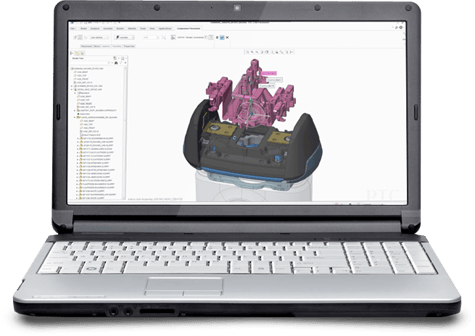
If you’ve ever experienced that feeling during a meeting when someone passes off their idea as your own, you’ll know just how frustrating it can be. Before you know it, they’re being patted on the back and any attempt you could make to clarify the idea’s origin will likely be dismissed as sour grapes.
Retaining intellectual property (IP) of ideas you have swilling around your head isn’t particularly easy, but protecting a physical creation should be. Think about the files you generate during the process of 3D CAD modelling. They’re tangible and could easily be obtained by others who would rather skip the arduous task of creating them and instead benefit from someone else’s hard work.
In the world of product design, the effects of leaked CAD files can be disastrous. The midnight oil burnt on a never-before-seen design can all amount to nothing if, three months later, a product exhibiting the exact same characteristics hits the shelves.
Thankfully, we live in a world that offers numerous tools for simplifying the process of keeping 3D CAD files safe and secure. In this post, we’ve narrowed down three brilliant methods for building a fortress around your precious IP.
#1 Play safe with partners
Engineering firms should always look close to home when it comes to potential sources for design leaks. We’ll assume that you have safeguards in place for keeping employees on side, but partners need to be contained, too.
A good product lifecycle management (PLM) system should provide you with the tools that can determine who can and can’t access your 3D CAD files. Any request for product data, no matter from where it originates within the supply chain, can then be administered from a single system.
Rather than a Big Brother approach, this benefits everyone involved, because there is full accountability for all access to design files. Collaboration can continue unabated, but you can be safe in the knowledge that your files are secure.
#2 Take advantage of shrinkwrapping
If you work with extended teams and suppliers, it is unlikely that each party will need access to the entirety of your 3D models. If a supplier needs to design a component to fit into an assembly, they won’t need to see the whole model. It is therefore desirable to only allow them access to the parts they need.
The answer to this is what is known as ‘shrinkwrapping’. This technique effectively skims your 3D Model for surface data relating to the request and delivers only the pertinent details to the party that requested them. This means external detail is excluded and has the added benefit of producing smaller file sizes that are easier to download and digest.
#3 The importance of read-only
Not everyone needs to edit your 3D CAD files. For that reason, the ability to share them in a read-only format is crucial.
By using what are known as visualisation files, engineering firms can share their lovingly-crafted designs with third parties without any danger of them being modified or physically acquired. The third party can view, measure, section and compare your model, but can’t modify or download it.
Models and drawings can also be watermarked using this method, so there’s never any doubt over the origin of the file.
Don't let them steal your glory
Your 3D CAD files are as precious. By using the three methods above, you’ll ensure the IP remains your own and rightfully retain any success that the eventual product attracts.
